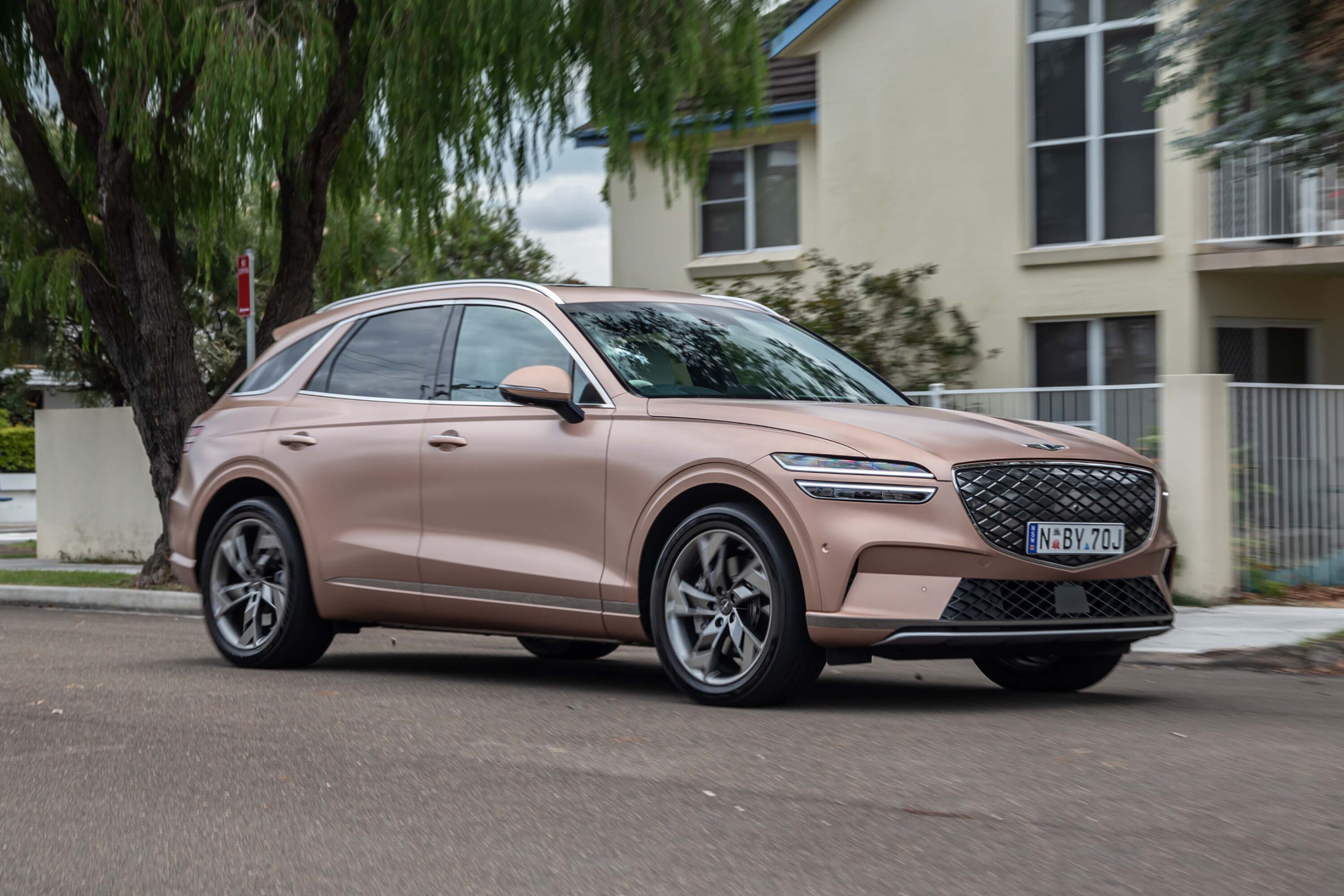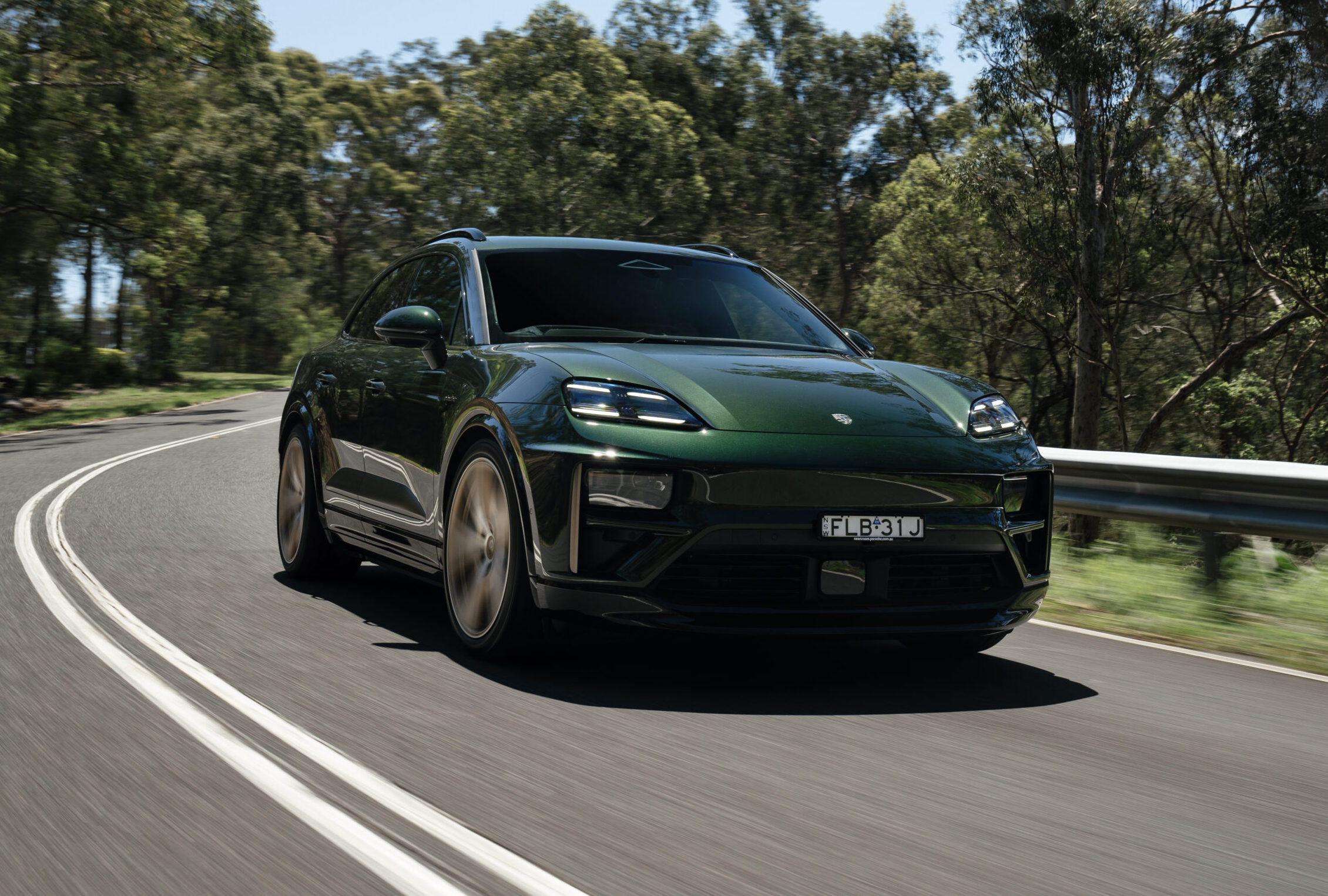Score breakdown
Things we like
- Ownership proposition
- Impressive performance
- Super luxury interior
Not so much
- Feels heavy
- Doesn’t quite hit the range numbers
- No spare tyre
When I first read the phrase “Genesis Electrified GV70” I will admit I was slightly confused. Electrification is something a lot of makers claim – even if it’s not an EV but simply the mildest of mild hybrids.
I think a lot of people will think the same thing – “what does that mean?” Mild hybrid? Hybrid? Plug-in hybrid? Or a full-blown battery electric vehicle?
In this case, it means a mid-size Genesis GV70 SUV fitted with a 77.4kWh battery feeding two motors totalling 360kW and 700Nm. These are big numbers, even if they’re dragging more than two tonnes along and that alone should be enough for people to take notice.
Except there hasn’t been a lot of attention for this car, perhaps because the Genesis brand is still making a name for itself, perhaps because Hyundai’s Ioniq 5 and 6 have taken all the glory. But for a pretty sharp price (relatively speaking) you’re getting a loaded-up fully electric SUV with decent range; something that seemingly everyone wants.

JUMP AHEAD
- How much is it, and what do you get?
- How do rivals compare on value?
- Interior comfort, space and storage
- Battery & Charging
- What is it like to drive?
- How is it on electricity?
- How safe is it?
- Warranty and running costs
- VERDICT
- Specifications
How much is it, and what do you get?
The GV70 is available as a turbo four (petrol and diesel), a twin-turbo petrol V6 as well as the Electrified version.
There is quite a price gap between the V6 and Electrified, a stout $43,200 making the EV $127,800 before on-road costs. It’s almost double that of the base four-cylinder. As you might expect, it’s absolutely loaded:
| 2023 Genesis Electrified GV70 standard features | |
|---|---|
| 12.3-inch central touchscreen | Heated steering wheel |
| 12.3-inch digital dashboard | Interior LED lighting |
| 14-speaker Harman audio system | Keyless entry and start |
| 20-inch alloy wheels | Nappa leather upholstery |
| Active noise cancelling | Powered steering wheel adjustment |
| Around-view cameras | Powered tailgate |
| Auto Matrix LED headlights | Powered, heated and ventilated front seats with active bolsters |
| Auto wipers | Reversing camera |
| DAB+ digital radio | Satellite navigation |
| Fob-operated remote start and parking control | Three-zone climate control |
| Front and rear parking sensors | Tyre repair kit |
| Head-up display | Wired Android Auto |
| Heat pump heater | Wired Apple CarPlay |
| Heated rear seats | Wireless phone charging |
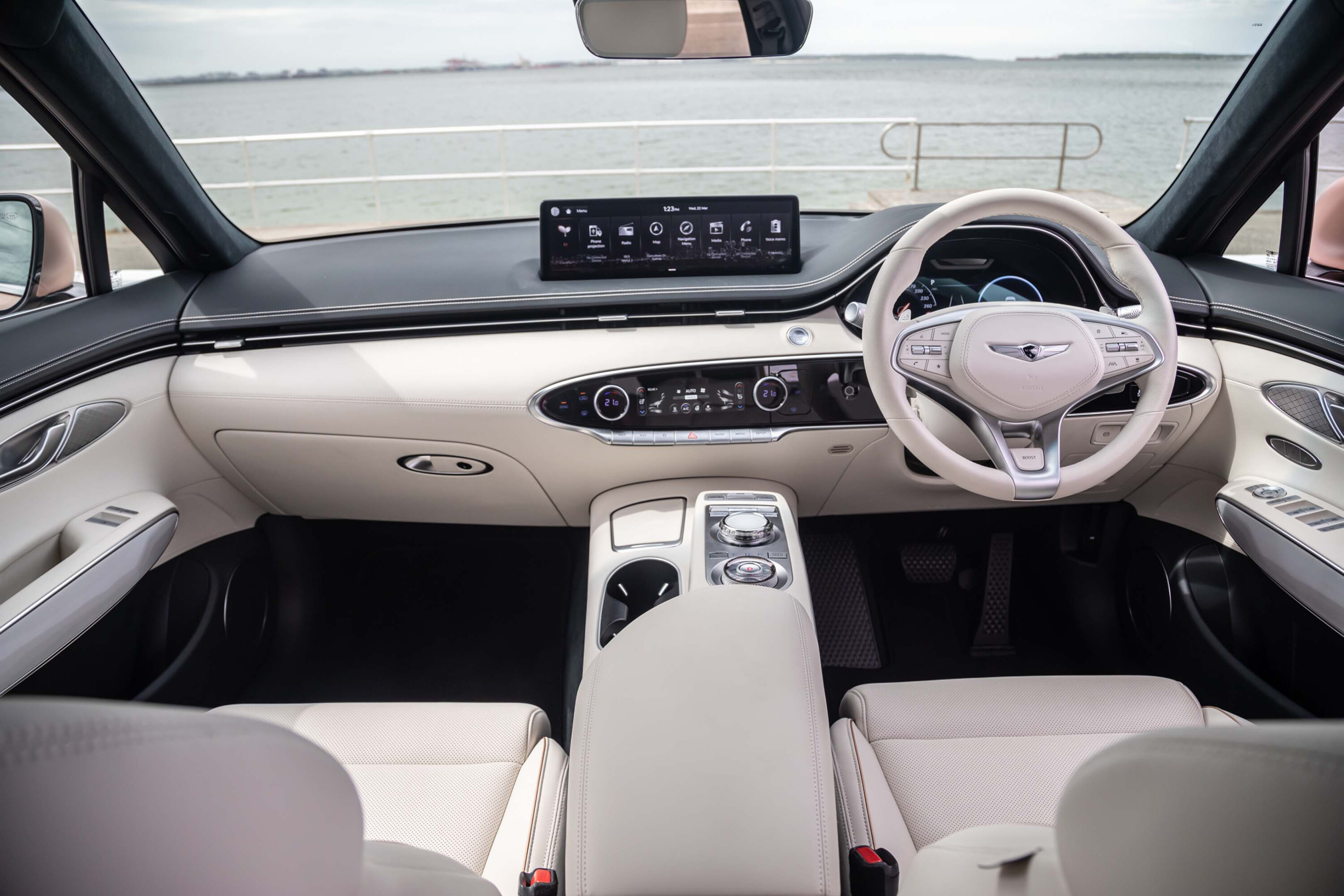
In a perverse way, the price of the EV shows what a comparative bargain the V6 is as the spec is broadly the same as the combustion version. There’s almost nothing missing from the spec list apart from the ongoing and mystifying absence of wireless smartphone integration.
Being an EV, there’s some app integration and cabin pre-conditioning functionality. You also score a five-year subscription to Chargefox’s charging network meaning that if the wind is at your back, you won’t pay for electrons to run your car.
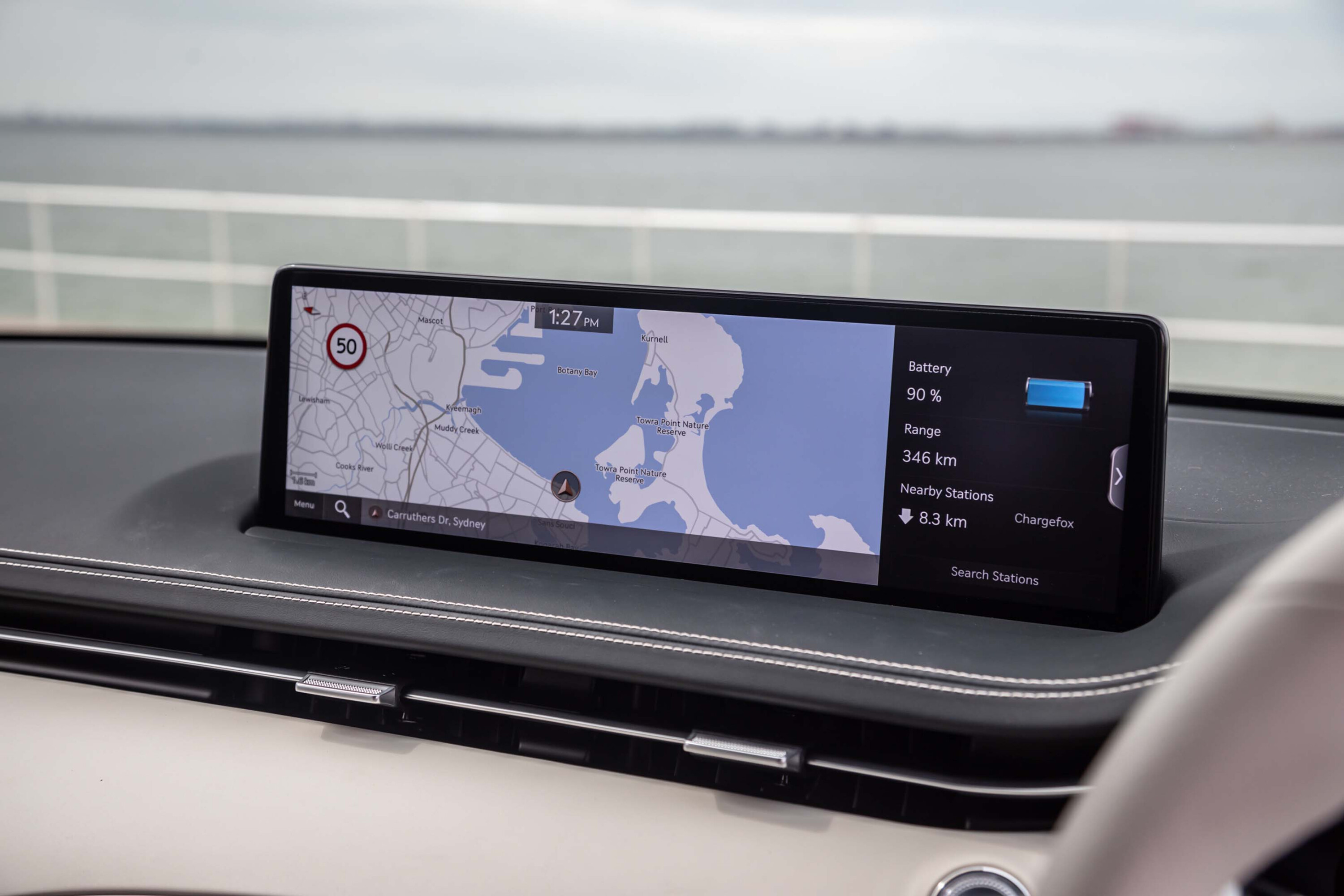
If you don’t fancy your chances – although there has to be a point where the charging company gets its act together under new ownership – you can instead choose a wallbox that will charge your car a bit quicker than regular plug sockets at home or work.
Also worth noting is that the charging subscription stays with the car if you sell it within the five-year period.
One more point of order is that the sat-nav will tell you if you need to charge for a given trip you’ve entered and help you find a charging station.
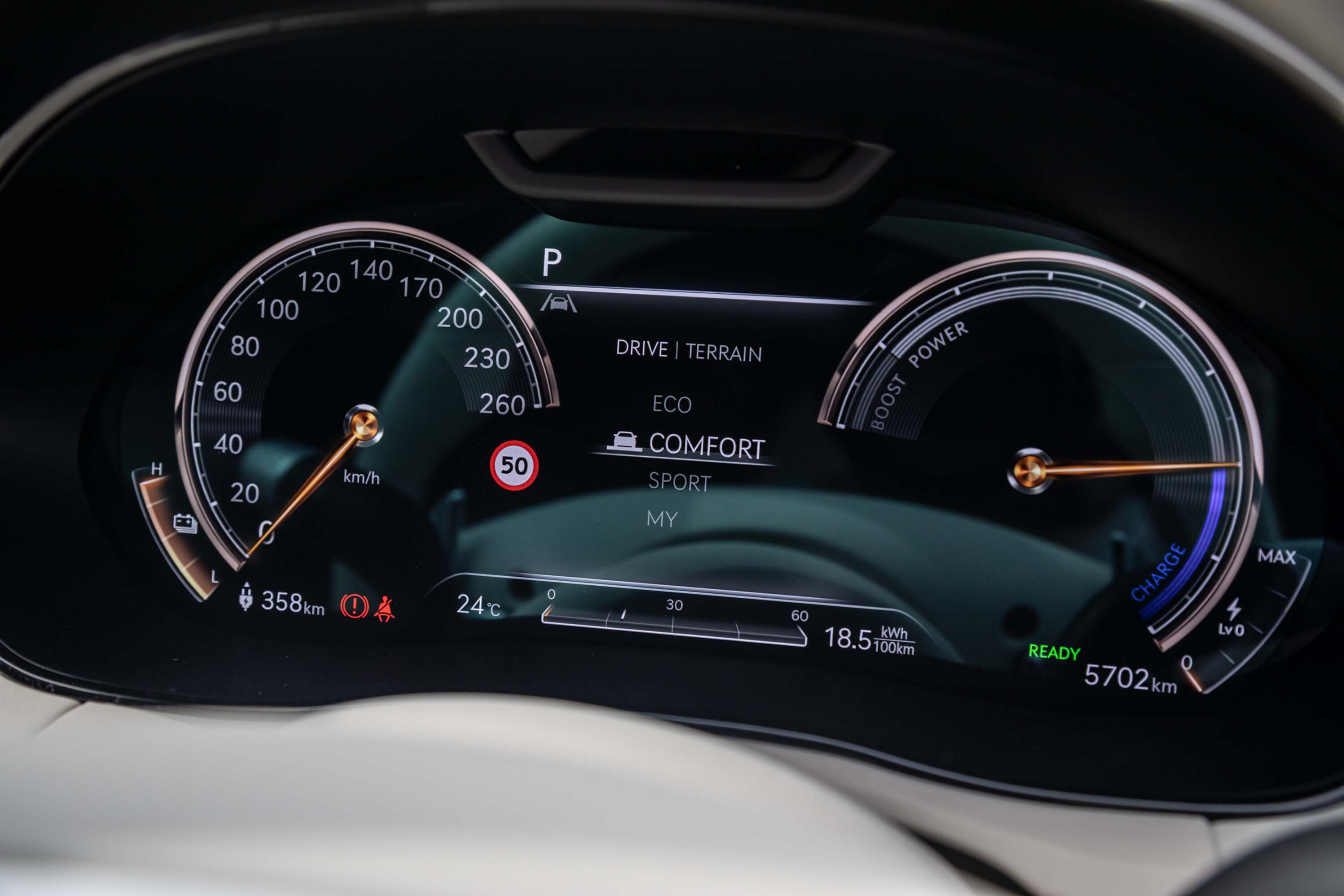
How do rivals compare on value?
As far as rivals go, there are two obvious machines from Germany. The first is the BMW iX3, another ICE-powered model made into an EV.
It’s had a hefty chunk lopped out of its launch price, now within touching distance of the less-than-stellar Tesla Model Y Performance at $104,900 before on-road costs.
The other German is the Mercedes EQC which is priced far closer to the GV70 Electrifed at $128,000 before on-road costs. The 2020 Wheels COTY winner is one of a now burgeoning range of electric Mercs and is probably starting to feel a little old even if it doesn’t look it.
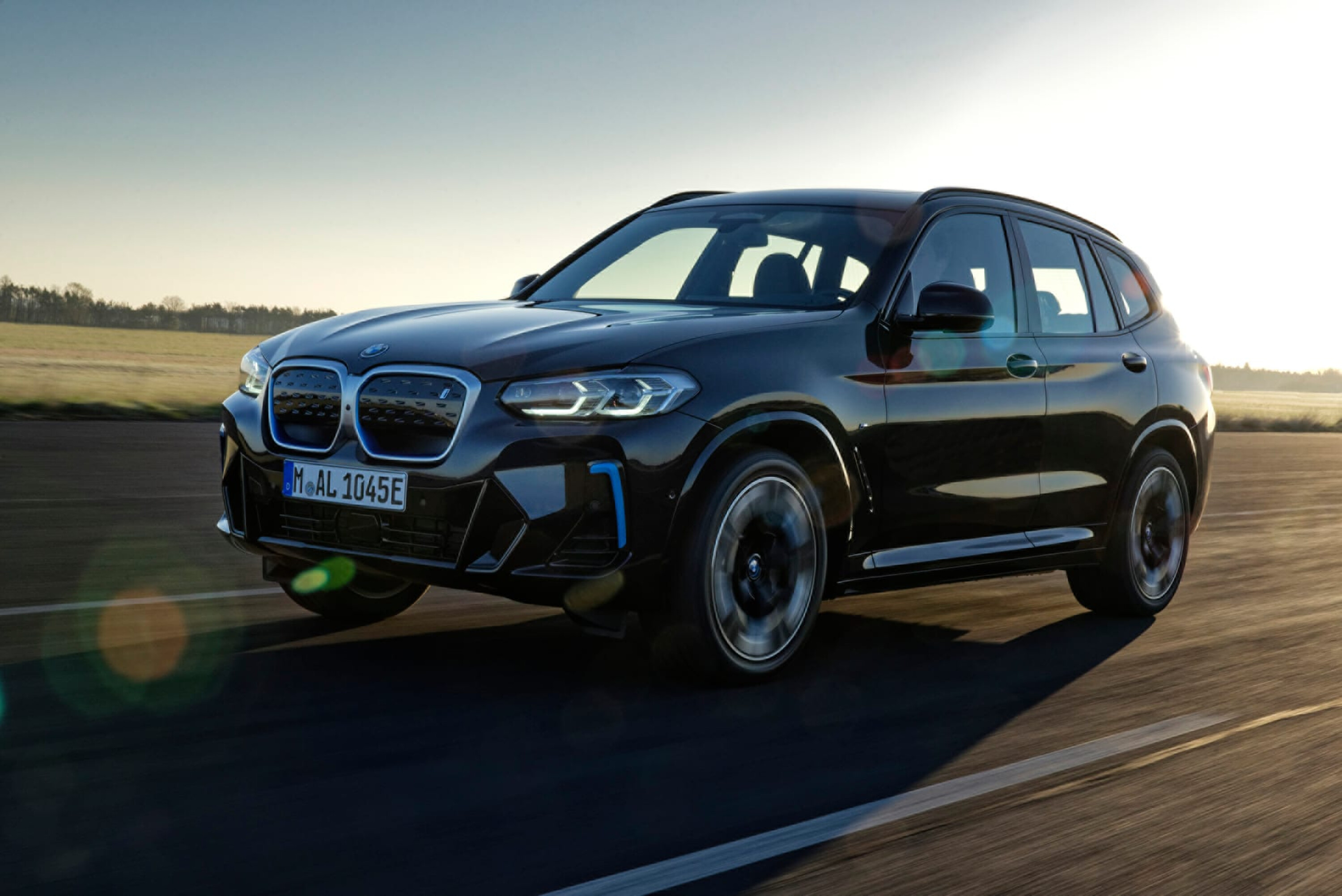
Audi’s (soon-to-be Q8) E-Tron is priced from $132,980 for entry 55 SUV and heads up to $153,500 for the E-Tron S (both before on-road costs), which is probably the more sensible match for the GV70. It comes with six years of free charging at Chargefox as opposed to five for the BMW and Genesis. I don’t have another joke about broken chargers.
I think you could also consider the Jaguar I-Pace here, although it’s quite a bit more expensive at $146,857 before on-road costs. It has a bigger battery but a similar range and is not as lavishly equipped. It’s a very nice car, though, and underrated.
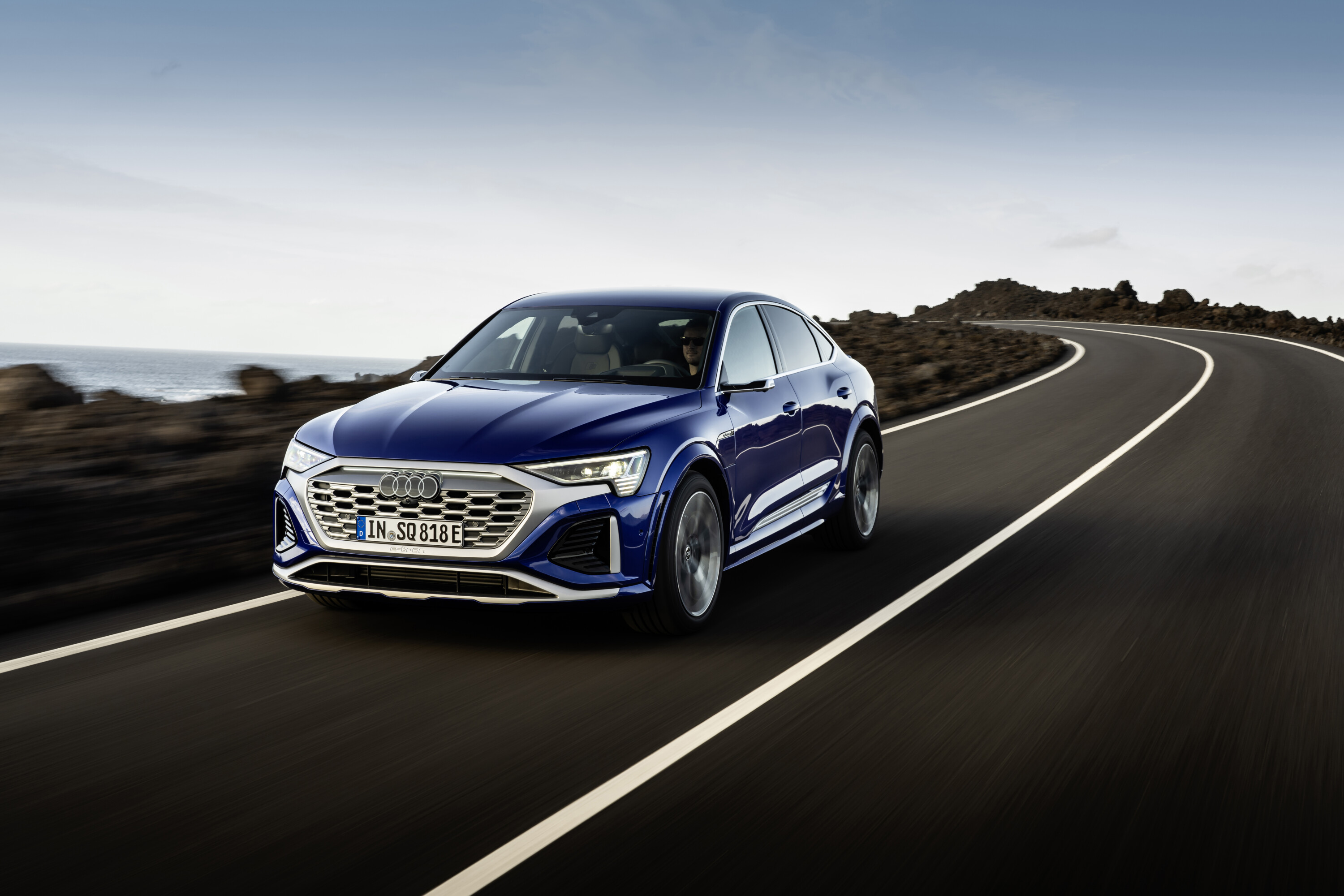
Interior comfort, space and storage
The GV70 is a mid-size SUV but is quite roomy and feels a bit bigger than that.
And in that roomy cabin are five Nappa leather-clad seats, lots of lovely materials and barely a plastic panel anywhere, at least not an uncovered one.
Compared to the internal combustion engine (ICE) versions, almost nothing has changed. I think that’s entirely sensible and removes that self-conscious element some people don’t like about EVs.
The front seats are comfortable and accommodating for a broad range of backsides. They also feature active bolstering and if you’ve been driving for long enough, a surprise massage function. Which you can disable, because it feels like the kid behind you pushing your back with their knees.

You get two cup holders, a wireless charging pad in what looks like another cup holder and a reasonably-sized bin under the armrest. The doors also have small bottle holders.
I was more than once briefly confused by the fact there are two rotary controllers. The bigger one controls the media system and has a fairly iffy scratchpad on top that made me unfeasibly cranky when I tried to write something into the sat-nav.
The second is the gear selector, which works well, but they both look similar in your peripheral vision. I guess you’d get used to it, but it’s an interesting design choice.

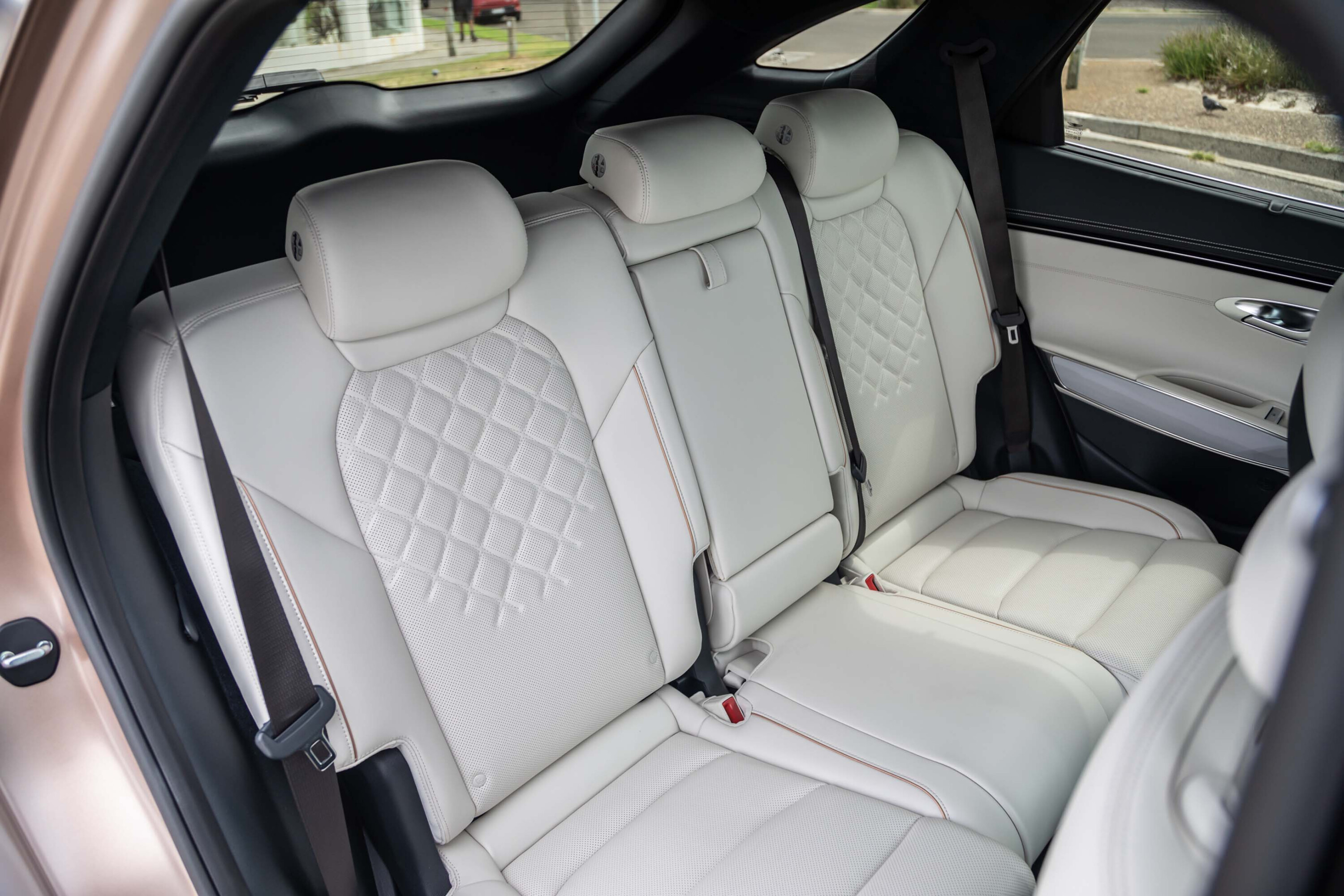
You’ll find plenty of space in the back for someone 180cm tall, perhaps even taller.
The seat is well-shaped, there’s plenty of headroom and it’s a very comfortable place to be. The armrest features two cup holders, you get air vents and there are two USB-A ports and a 12-volt supply, in addition to the 240-volt power outlet.
The boot is smaller than that of the ICE cars courtesy of the rear motor pack, with cargo space dropping 39 litres to 502L, which isn’t bad considering the shape of the rear of the car.

Battery and charging
The GV70 packs a 77.4kW lithium-ion battery with an 800-volt power system, meaning a scorchingly fast theoretical charging speed of 350kW.
| 2023 Genesis Electrified GV70 battery details | |
|---|---|
| Maximum battery output | 394kW |
| AC charging time | 7h40m (at maximum) |
| AC charging (maximum) | 10.5kW |
| 50kW charging 10-80 per cent | 1h15m |
| 350kW 10-80 per cent | 18m |
| Charge port | Front grille, CCS Combo2 |
That’s mighty fast but as we’ve seen on other Hyundai and Kia products with the same specs, that means a real-world charge speed of around 250kW, which is still hugely impressive. Hardly any rival can match this outside of the South Korean giant’s walls. Certainly not at this price.
Very few chargers can deliver that kind of juice, of course. There is a much larger number of 50kW chargers around the place that seem more reliable at delivering the promised numbers.

Australia’s best electric cars for 2023
We’ve tested nearly every EV below six figures in Australia to rank the best on sale today
Like its other-branded siblings, the Genesis has vehicle-to-load (V2L) capability with a maximum output of 3.6kW at up to 15 amps.
To give you an idea of how much that is, it will run a reasonably hefty coffee machine as well as a TV, fridge, that kind of thing.
Based on those numbers (and ignoring the realities of attempting to run an entire house with a single domestic plug) it would power a house for about 98 per cent of the time, only faltering when the oven went on. Point is, that’s ample power to run a campsite or very fancy picnic for several hours.
You get one external V2L outlet (it plugs into the charge port and reverses the direction of energy flow) and one inside the car.
The charge port is in the front grille – blanked out for aero performance, naturally – on the right-hand side as you’re looking at the car. It’s handy for nosing into parking spaces with a charger located at the end.
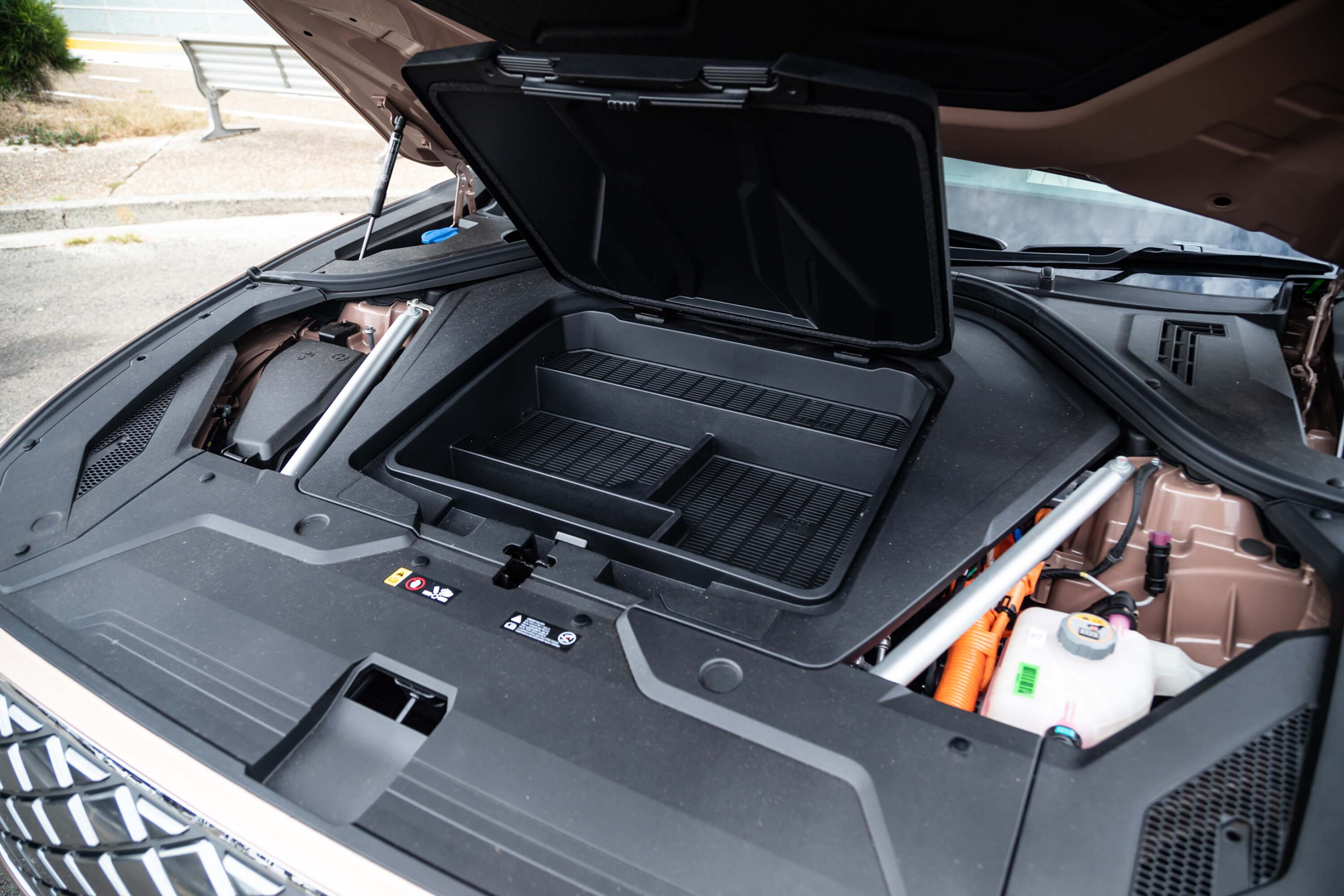
What is it like to drive?
The first thing you need to know about the Electrified GV70 is that it’s 2300kg. That’s a lot of weight for a mid-size SUV.
The second thing you need to know is that with up to 360kW and 700Nm available, it doesn’t matter very much.
| 2023 Genesis Electrified GV70 drivetrain | |
|---|---|
| Drive | all-wheel |
| Motor | dual electric motors |
| Power front/rear (boost) | 160kW/160kW (180kW/180kW) |
| Combined power (boost) | 320kW (360kW) |
| Torque front/rear | 350Nm/350Nm |
| Combined torque | 700Nm |
| 0-100km/h | 4.2sec (claimed) |
| Transmission | single-speed reduction gear |
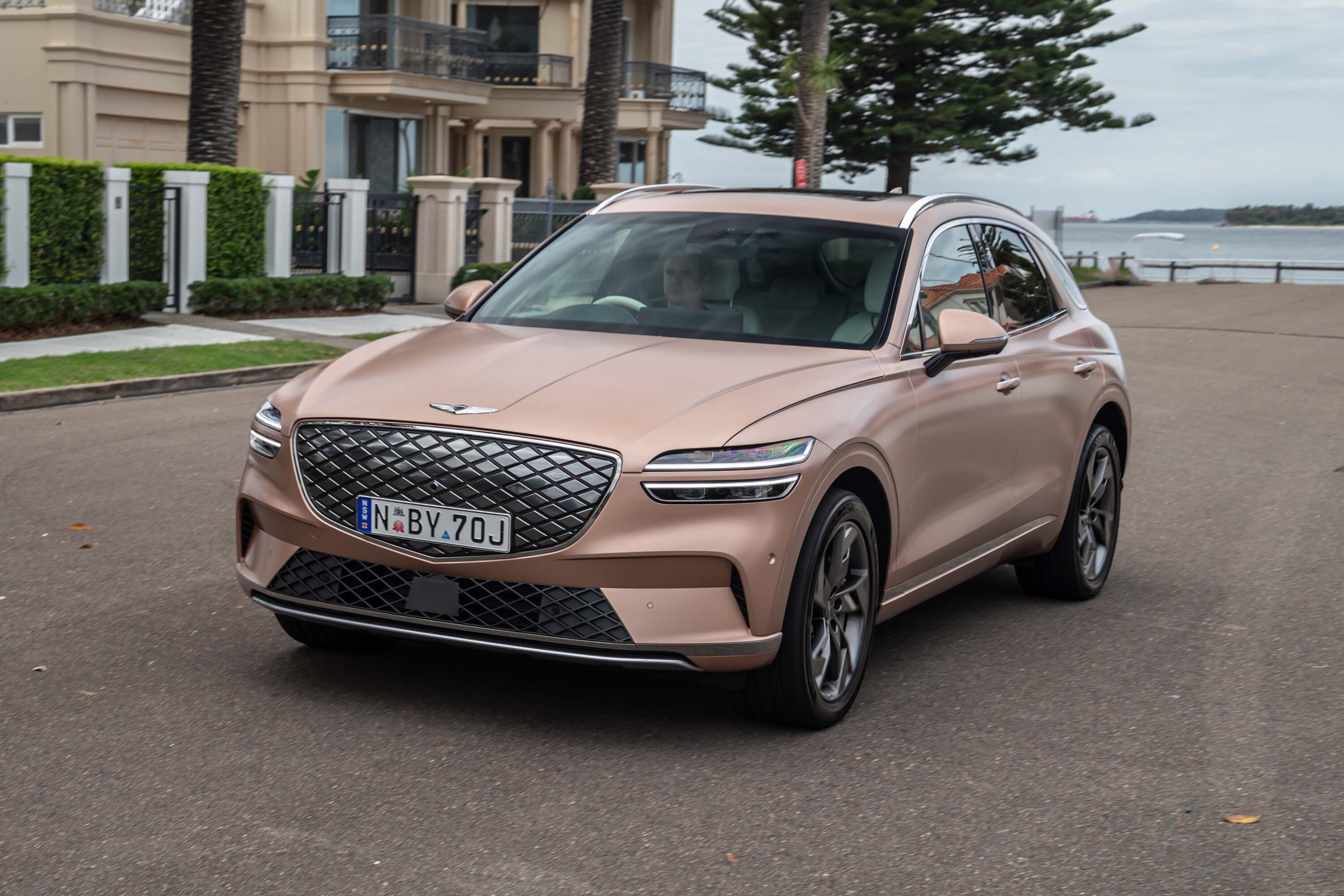
Obviously, that’s not strictly true – it does matter because it’s going to hit the range, just as being a high-riding SUV does, 0.29 drag coefficient or not.
That 360kW headline figure is not always available, either – there’s a Boost button on the lower steering wheel spoke that unleashes an extra 20kW at each end. But really, 320kW and 700Nm is a pretty acceptable pair of numbers before you hit the button.
In normal running – and if the diagrams are to be believed – the GV70’s rear tyres do most, if not all, of the work until throttle or grip demands call the fronts into action. That has a couple of benefits – when you do floor it you’ll notice mild torque steer, the front wheels wandering across the lane a little. So you have less corrupted steering although you’d never call this set-up one of the greats.
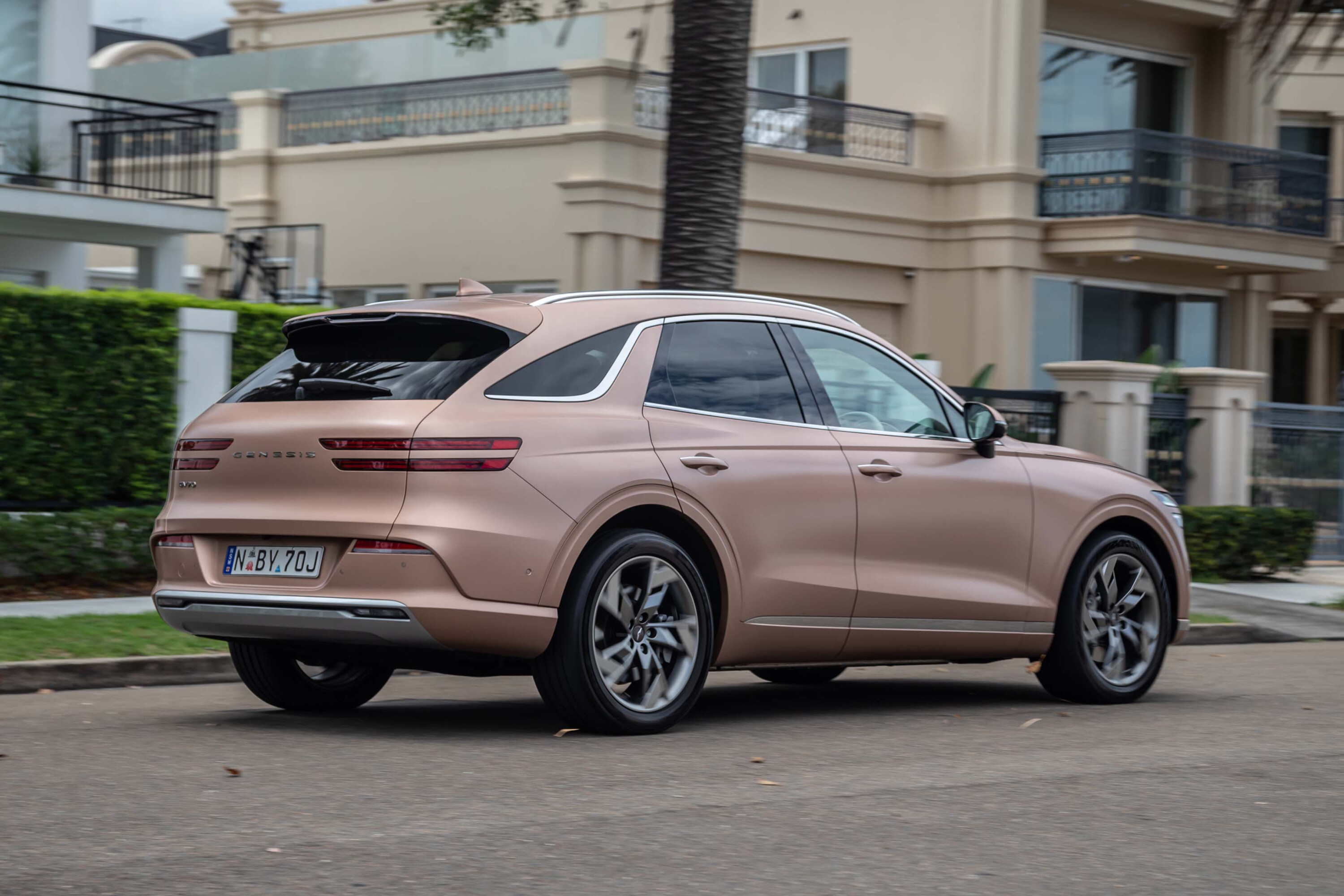
It also means the electrical draw is lower, helping extend the urban range. It’s remarkably efficient around town, better than the lower, lighter Jaguar I-Pace I drove recently, meaning a similar everyday range from a smaller battery.
This is an incredibly comfortable car to drive around in. You get plenty of vision out and the suspension in Comfort mode reads the road ahead, continually adjusting accordingly. Every now and then there’s a moment of awkwardness in the ride, but it’s not intrusive and is quickly gathered up.
Ride comfort never really deteriorates, even in Sport mode, which is where I left the car for most of the week I had it. If anything I found the Normal and Eco modes just too soft, but most folks who buy this kind of car will likely be perfectly happy with it.
Sport mode also sharpens up the throttle, which my wife and I both agreed was better.
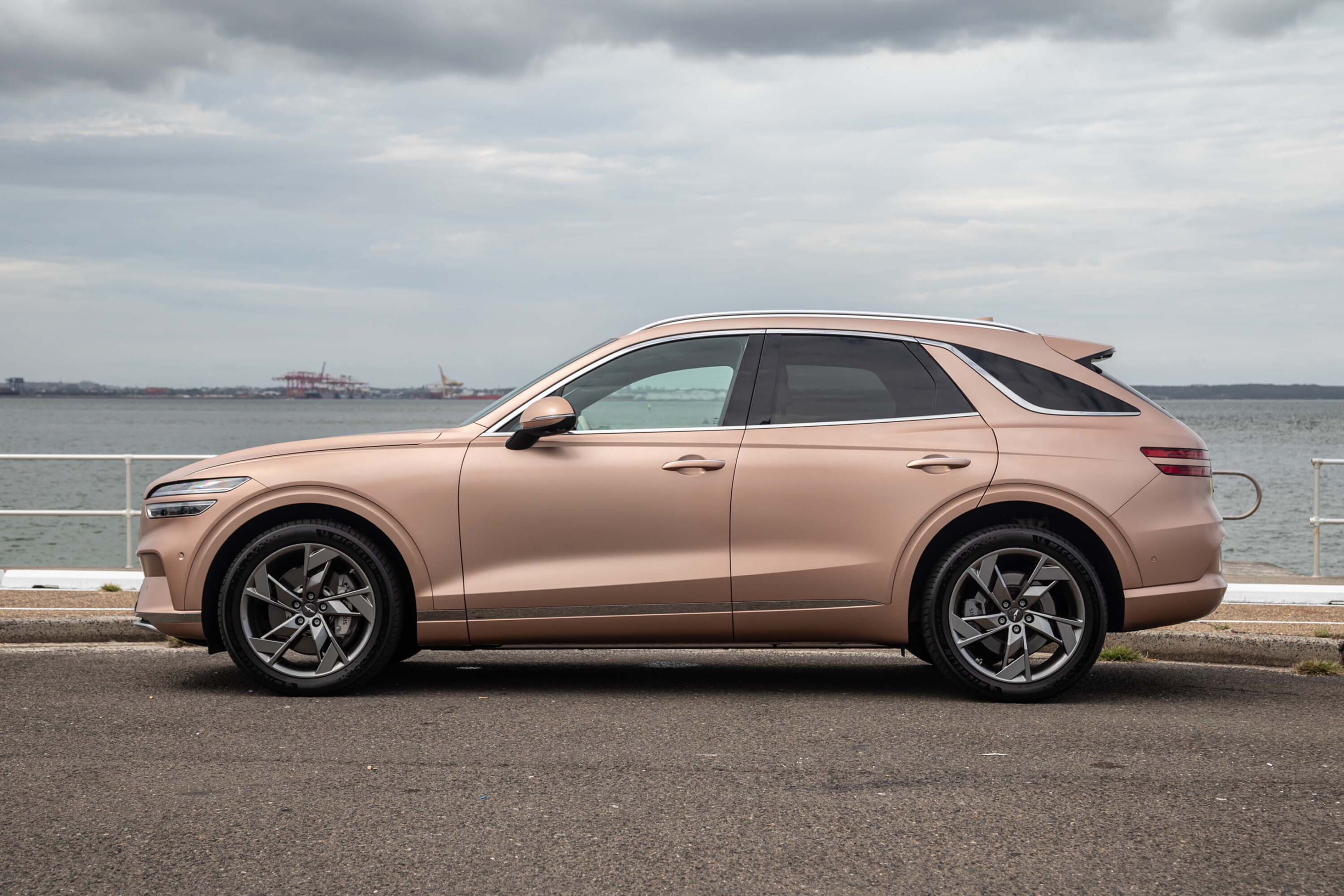
At all times, though, there is an astonishing turn of speed lurking, just waiting for pedal to meet carpet.
As these cars mature, engineers have discovered that neck-snapping acceleration isn’t actually that much fun, so the way the GV70’s power and torque roll in is smooth and predictable.
It’s great fun to thread through some bends, the trick of course being to ensure you’ve got the highest level of regenerative braking available to you and using the slow in/fast out approach. You can never get away from the feeling of weight, but the car does its best to mask it most of the time.
The Electrified GV70 is pretty much untouchable in traffic, so unless you’re competing with another powerful EV, that gap is yours. Out on the freeway, it’s super quiet – aided by noise cancelling tech – and with the stereo working its magic through all those speakers, very relaxing because there are lots of driver aids in the form of adaptive cruise control and various lane-keeping features.

I’d like some more accuracy from the steering as I often found myself drifting to either side of the lane and I wasn’t always certain about what the wheels were doing. But given the vibe of this car is luxury, it’s more want than need.
What could improve the is sat-nav’s charging station display. When you’re running in a split screen it regularly updates where your nearest charging station is. Underneath that display is a button to search for it but some don’t actually seem to appear in the maps when it switches to them.
The split screen was adamant about the existence of a nearby Chargepoint charger but the main screen didn’t seem so sure. It also didn’t know about our nearest charger nor that the ones at Miranda Westfield aren’t equipped with CCS2 plugs. Or about the Evie charger at Lawson.
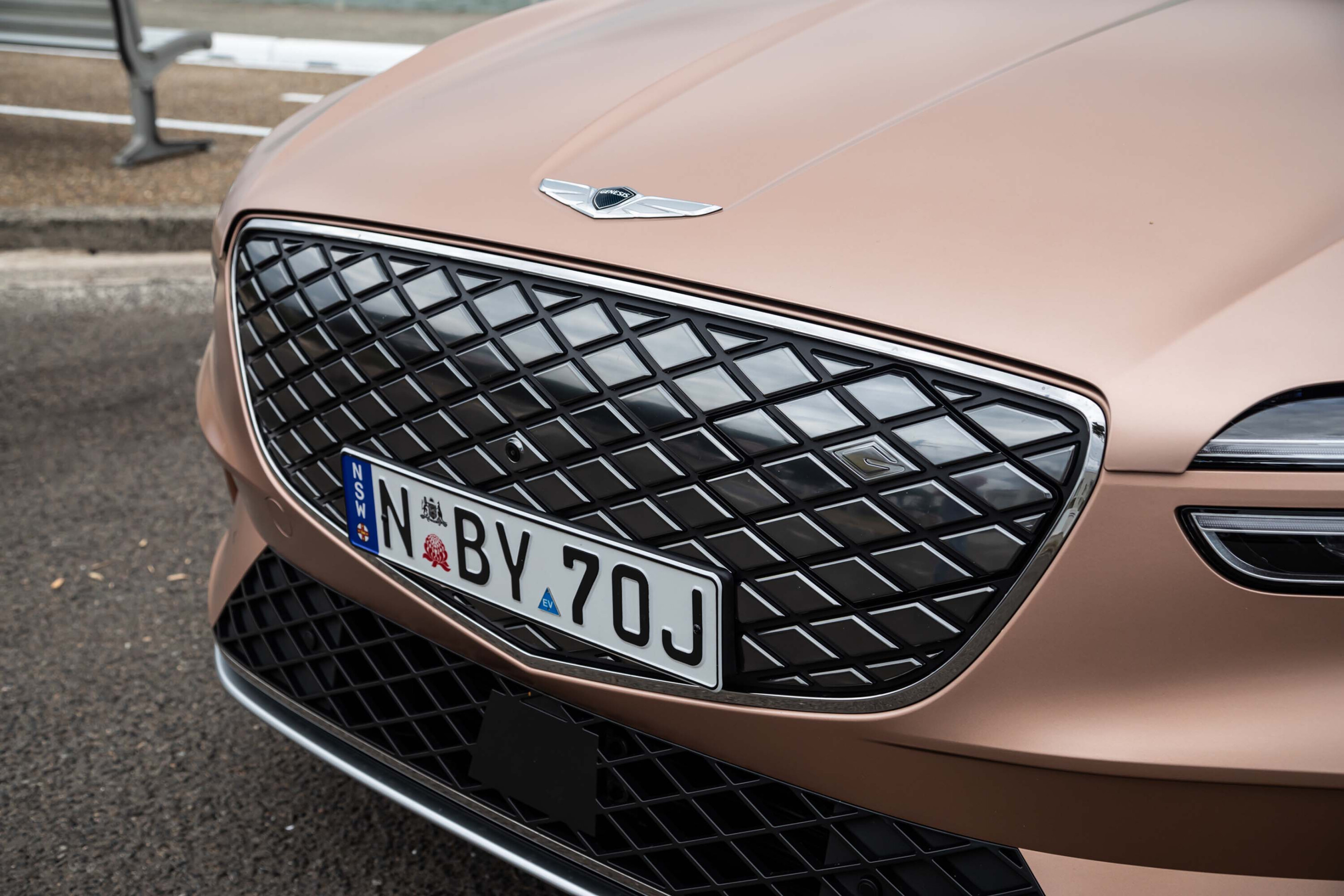
How is it on electricity?
Genesis claims a WLTP driving range of 445km – so by the car’s own admission, it’s slightly shy of that with a full battery. Genesis also claims a power consumption figure of 19.9kWh/100km.
| 2023 Genesis Electrified GV70 energy consumption | |
|---|---|
| Energy consumption (WLTP, claimed) | 19.9kWh/100km |
| Energy consumption on test | 19.1kWh/100km |
| Claimed range (WLTP, claimed) | 445km |
| Estimated real-world range | 391km |
This isn’t bad for a fairly large and high-riding SUV. I charged this Genesis three times, all of which using the far more readily available 50kW charging stations dotted around the place.
I avoided Chargefox because I’m not a gambling man and instead twice used my local Exploren charger which gave me a steady 50kW right up to 90 per cent of battery capacity, or 380km. The third charge was at Evie’s Lawson charger, covered below.
My test loop out to the Blue Mountains and back takes in long stretches of 80km/h and 110km/h road and, of course, a steepish climb between Emu Plains and Glenbrook. Yeah, so what? Well, both of these types of driving consume a lot of juice.
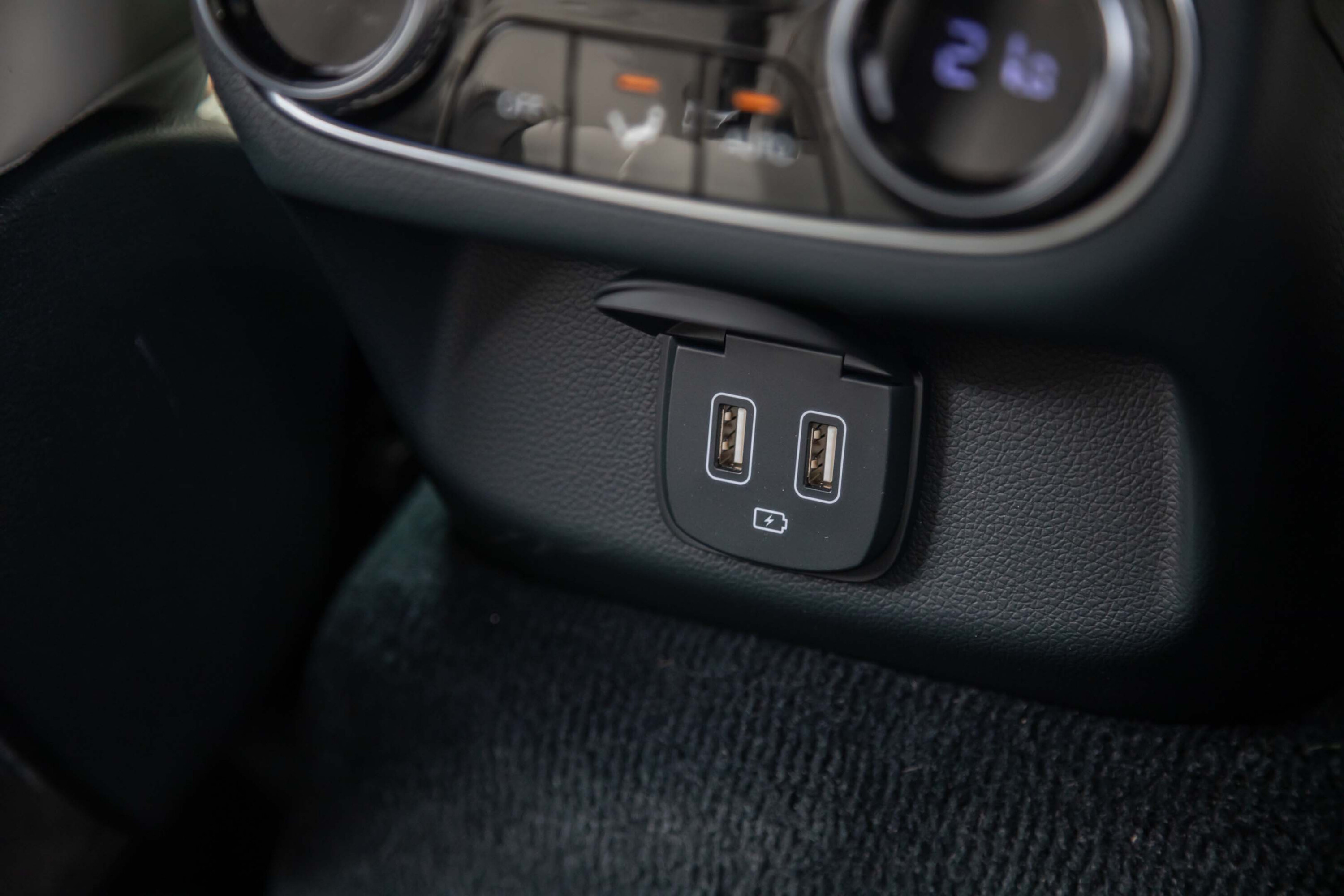
Between Sydney and Katoomba, the car told me it had consumed energy at a rate of 24.3kW/h, meaning a 300km range.
We left our lunch spot with a 49 per cent state of charge. On our way back down, we did the electric equivalent of a splash and dash at Evie’s Lawson charging station. As a side note, this is the rare occasion where a charge station isn’t secreted in a parking dungeon or a smelly corner of a petrol station, but straight across the road from the awesome Black Cockatoo bakery.
It also has two CCS2 and two CHADeMo rather than one of each, meaning I could charge while the Kona EV charged alongside, both ticking along at 50kW.
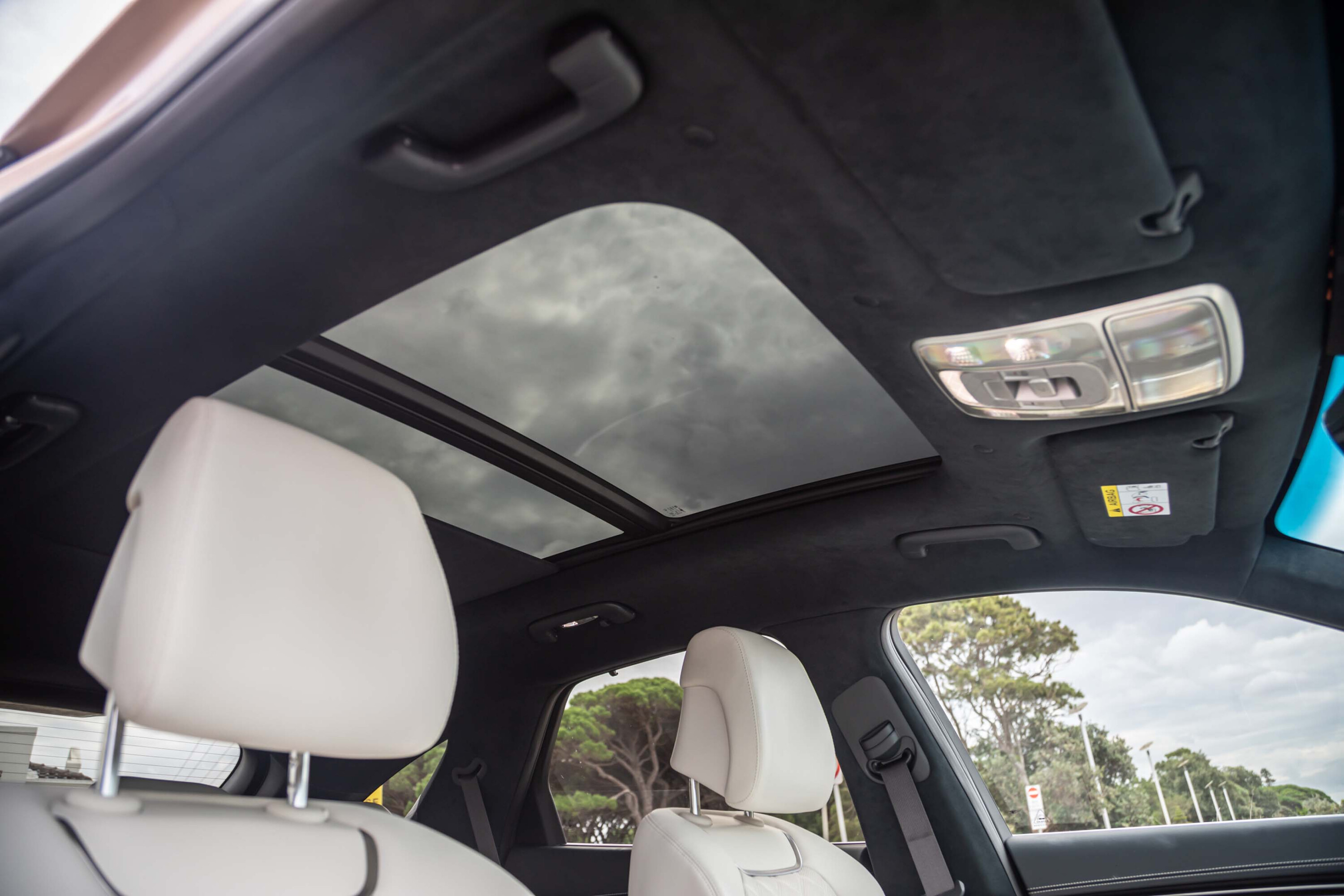
At the charger, we took on 17.816kWh in 21 minutes at a cost of $8.02. This took us back up to around 70% of charge, and as we headed down the mountains, that didn’t budge until we were back on the flat – a distance of 32km.
Gravity is your friend in an EV, at least when you’re going in the direction it prefers. We hadn’t expended any more energy than we’d recovered for nearly 50km.
We could easily have made it home without charging and with a rough back-of-the-envelope calculation, we’d have made it with an easy 180km in hand after starting the day with about 380km in the battery at 90 per cent charge.
That’s a lot of numbers, sure, but I found it all quite illuminating.
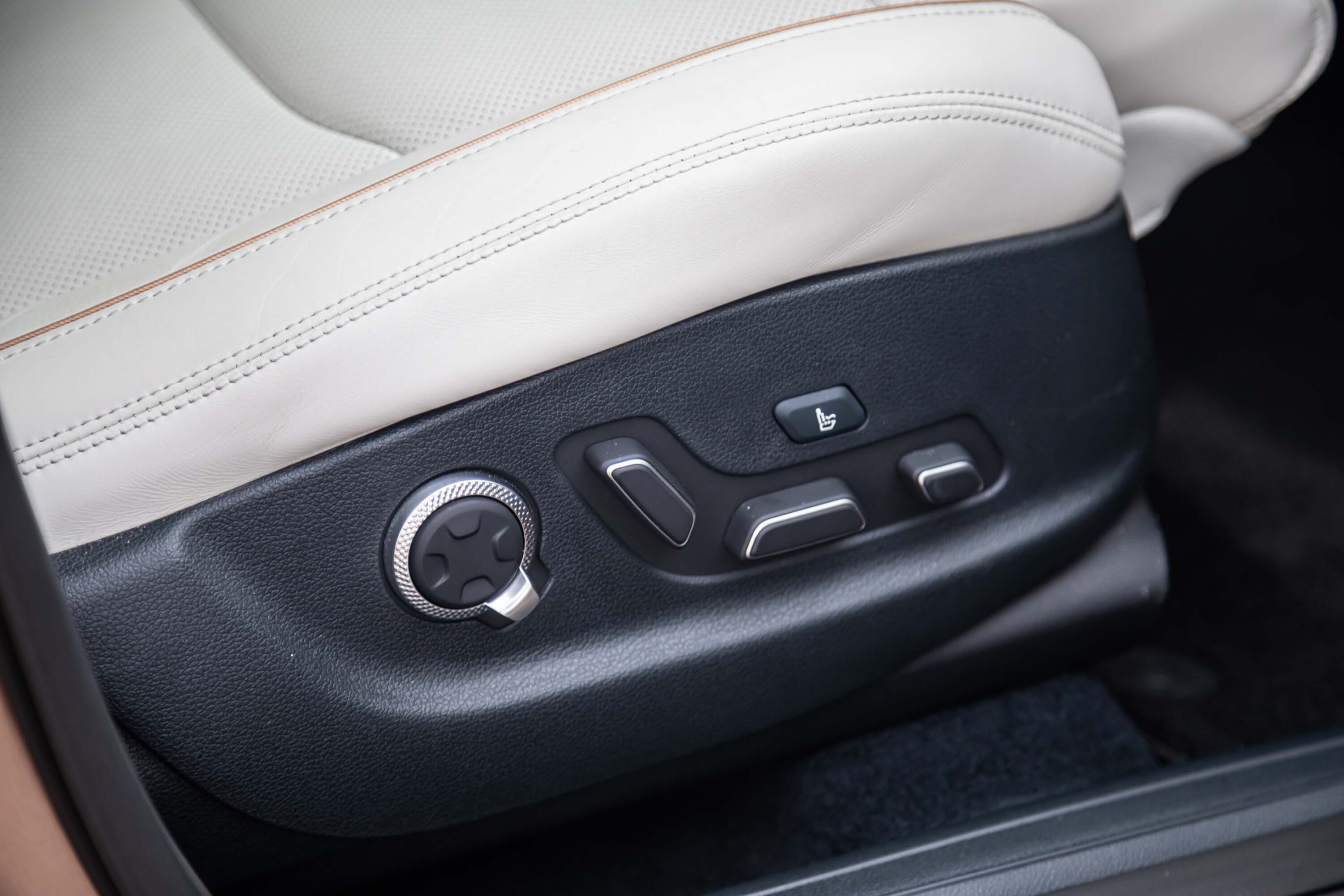
How safe is it?
The ICE version of the GV70 scored a five-star ANCAP safety rating but the Electrified version is unrated. There’s no shortage of safety gear, however:
| 2023 Genesis Electrified GV70 safety features | |
|---|---|
| 8 airbags | Lane-keep assist |
| ABS | Leading vehicle departure alert |
| Active bonnet | Multi-collision brake |
| Blind-spot monitoring and cameras | Parking collision avoidance assist |
| Cross junction AEB | Reverse AEB |
| Cross-traffic alert | Reverse cross-traffic alert |
| Driver attention detection | Speed limit assist |
| Forward auto emergency braking | Speed sign recognition |
| Lane following assist | Stability and traction controls |
The generous airbag count includes one for the driver’s knee and a front-centre airbag to try and prevent head clashes in a side impact.
Cyclist and pedestrian detection is part of the forward auto emergency braking package.
Two sets of ISOFIX points and three top-tether anchors take care of the baby and child seats.
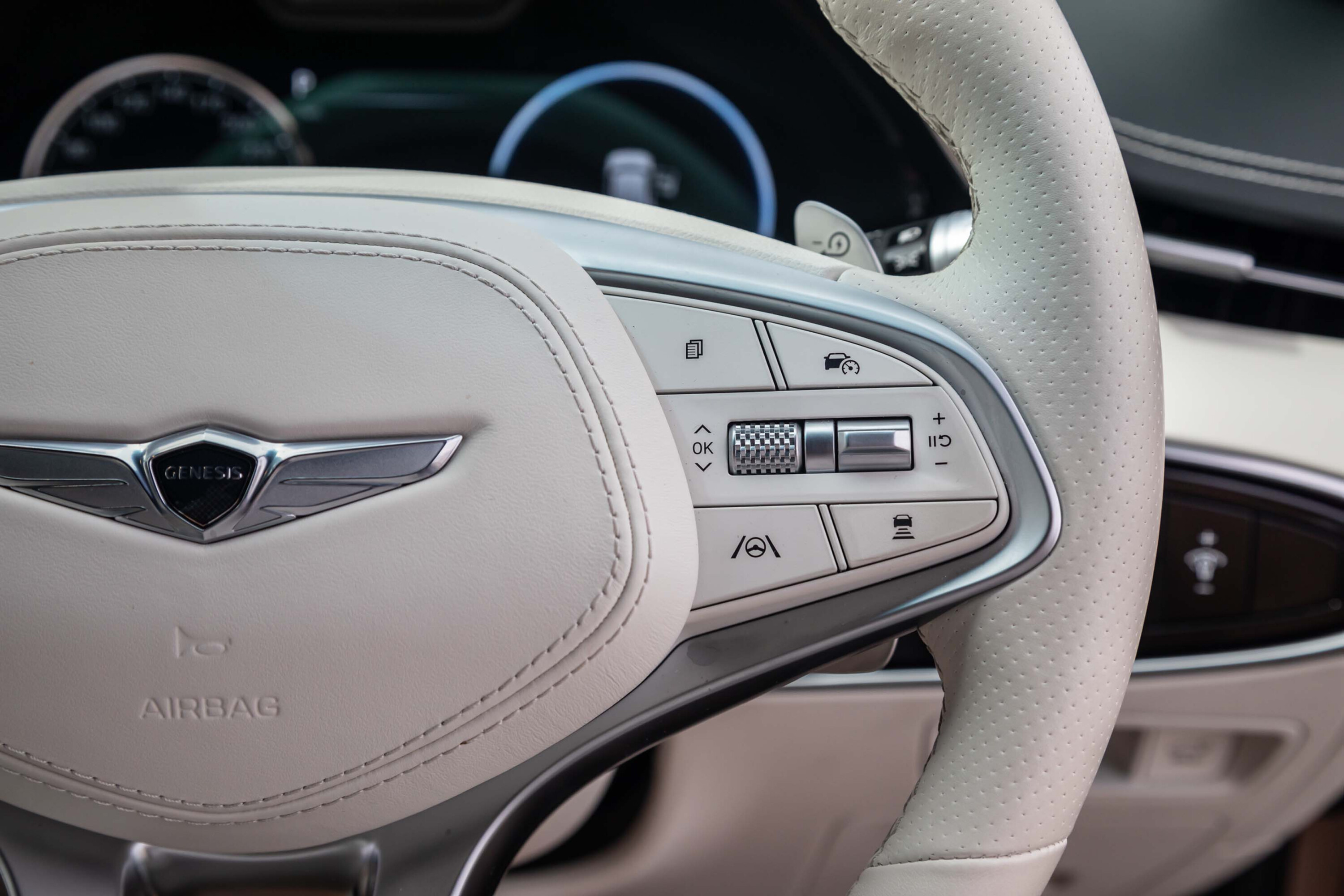
Warranty and running costs
Genesis offers a five-year, unlimited-kilometre vehicle warranty with a separate eight-year/160,000km warranty for the battery.
Servicing is free for the first five years and you’ll be expected to visit every 12 months or 15,000km.
Roadside assist and valet are available for a decade, which is such a long time it barely seems possible. Genesis will come and get the car from you for a service if you live within 70km of the Sydney, Melbourne or Brisbane CBDs, leave you with a loaner and yours will return serviced and washed.
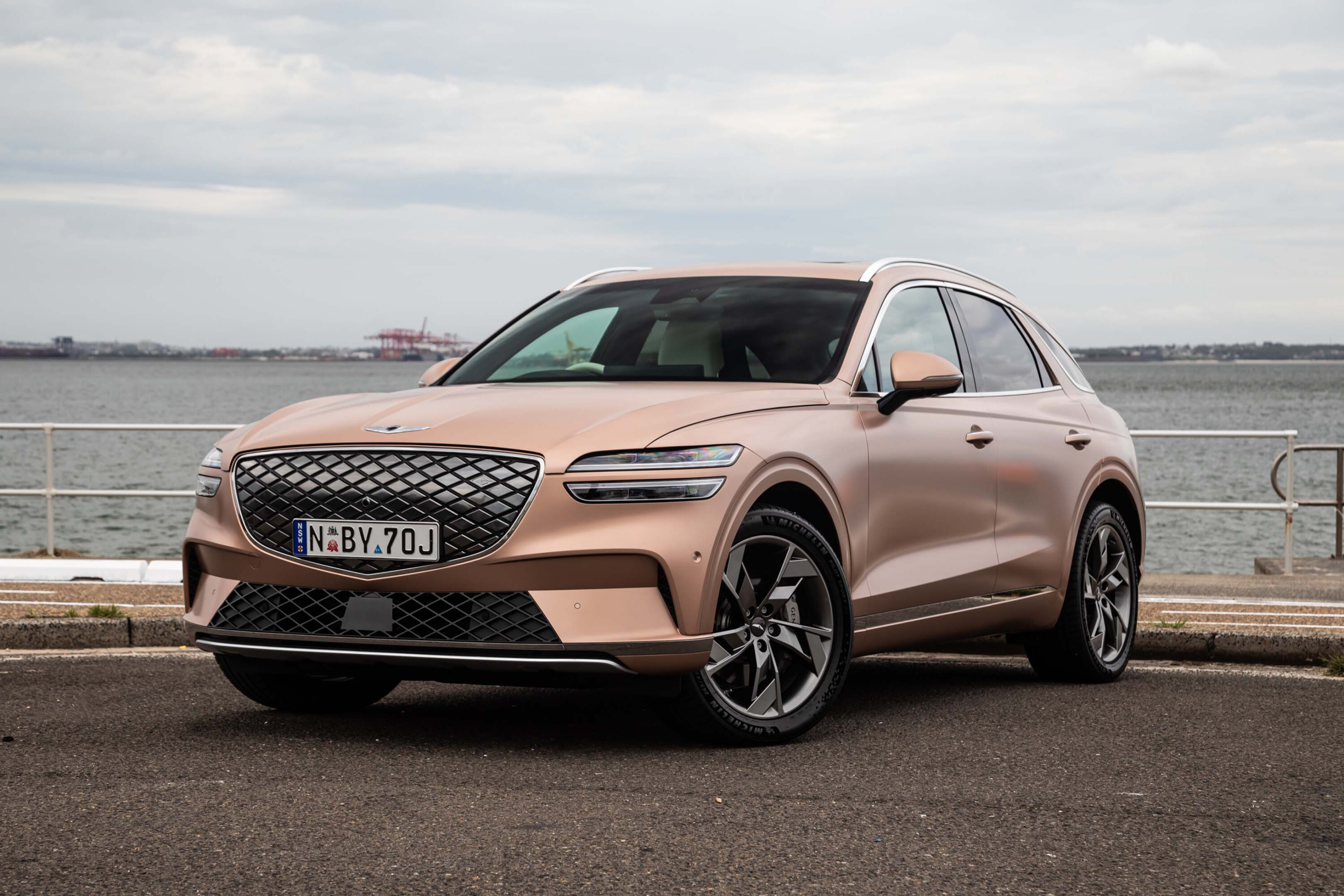
VERDICT
The Genesis Electrified GV70 is a terrific car. Fast, incredibly quiet and impressively comfortable, it looks and feels like a proper luxury SUV.
The price may be a sticking point for some – Genesis is still a new brand and there are plenty of established names within striking distance. Having to pony up that kind of cash and wait is another.
Still, this car outsold the Jaguar I-Pace’s 2022 annual total in just three months on sale, so maybe it’s a discovered gem after all.
| 2023 Genesis Electrified GV70 specifications | |
|---|---|
| Body | 5-door, 5-seat medium SUV |
| Drive | all-wheel |
| Motor | dual electric motors |
| Power front/rear (boost) | 160kW/160kW (180kW/180kW) |
| Combined power (boost) | 320kW (360kW) |
| Torque front/rear | 350Nm/350Nm |
| Combined torque | 700Nm |
| 0-100km/h | 4.2sec (claimed) |
| Transmission | single-speed reduction gear |
| Battery size | 77.4kWh lithium-Ion |
| DC charging speed (maximum) | 350kW |
| AC charging speed (maximum) | 10.5kW |
| Weight | 2310kg (tare) |
| Front suspension | MacPherson strut, multi-link |
| Rear suspension | multi-link (5 links) |
| L/W/H | 4715mm/1910mm/1625mm |
| Wheelbase | 2875mm |
| Brakes | 160m ventilated discs front/345mm ventilated discs rear |
| Tyres | 265/45 R20 Michelin Sport EV |
| Wheels | 20-inch alloy |
| Price | $127,800 + on-road costs |
⚡ More EV stories to help you choose the best car for your needs
Score breakdown
Things we like
- Ownership proposition
- Impressive performance
- Super luxury interior
Not so much
- Feels heavy
- Doesn’t quite hit the range numbers
- No spare tyre
We recommend
-
 News
News2023 Genesis Electrified GV70 Australian pricing and features
Genesis has revealed local details for the electric GV70 medium SUV, with one variant on offer
-
 Reviews
Reviews2022 Genesis Electrified GV70 review
Third new Genesis EV in as many months is arguably the brand’s most crucial – a premium medium SUV with competitive range, cutting-edge charging and impressive capabilities … for a price
-
 News
News2025 New Car Calendar: All the new cars coming to Australia
Take a look at our list of what is expected to launch in Australia in 2025 – plus those we might not see locally just yet


